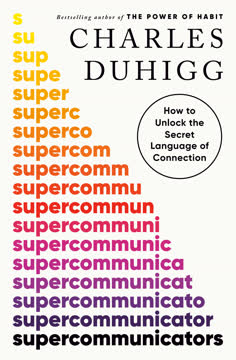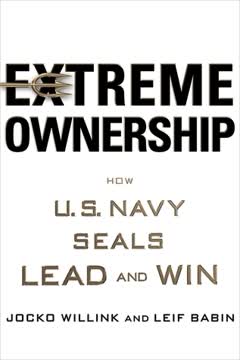Key Takeaways
1. Product Management: The Business of Products
Product management is the business management of products, product lines, or portfolios, holistically, for maximum value creation, across their life cycles.
Holistic business approach. Product management is not just about developing features or managing projects. It's about running a product like a mini-business within the larger organization. This involves understanding markets, customers, finances, and operations holistically.
Cross-functional leadership. Product managers must work across various departments, influencing without authority. They need to build relationships, communicate effectively, and lead cross-functional teams to achieve product success.
Strategic and tactical balance. Successful product managers balance strategic thinking with tactical execution. They must:
- Set vision and strategy
- Analyze markets and competition
- Prioritize features and roadmaps
- Oversee development and launches
- Monitor performance and iterate
2. Understanding Your Customer is Paramount
If you don't know who your customers are, or make a mistake in the identification of your customers, your great product idea won't see the light of day.
Customer-centric mindset. Product managers must deeply understand their customers' needs, pain points, and behaviors. This involves:
- Segmenting markets effectively
- Creating detailed customer personas
- Mapping customer journeys
- Conducting regular customer interviews and observations
Empathy and data. Successful product managers combine empathy with data-driven insights. They use qualitative methods like user interviews and observations, alongside quantitative data from surveys, usage analytics, and market research.
Continuous learning. Customer needs evolve, so product managers must constantly update their understanding. This involves:
- Regular customer interactions
- Analyzing feedback and support tickets
- Monitoring usage patterns and trends
- Staying attuned to market changes
3. Market and Competitor Intelligence Drive Strategy
If you're not thinking segments, you're not thinking. To think segments means you have to think about what drives customers, customer groups, and the choices that are or might be available to them.
Comprehensive market analysis. Product managers must understand their industry landscape using frameworks like PRESTO (Political, Regulatory, Economic, Social, Technological, Other). This provides context for strategic decisions.
Competitive intelligence. Gathering and analyzing competitor information is crucial. This includes:
- Product comparisons
- Pricing strategies
- Marketing tactics
- Technology and patents
- Business models
Dynamic monitoring. Markets and competition evolve rapidly. Product managers need systems to continuously gather and analyze intelligence, adjusting strategies accordingly.
4. Crafting a Dynamic Product Strategy and Roadmap
Strategy is a creative exercise. While there is a somewhat stepwise strategy formulation process, it is not about rote analytics.
Vision and goals. Product strategy starts with a clear vision of the future and specific, measurable goals. This provides direction and focus for the entire team.
Data-driven synthesis. Effective strategies combine market, customer, and internal data. Tools like SWOT analysis help synthesize this information into actionable insights.
Flexible roadmaps. Product roadmaps should be:
- Aligned with company strategy
- Based on customer needs and market opportunities
- Flexible enough to adapt to changing conditions
- Communicated clearly to stakeholders
Continuous iteration. Strategy isn't a one-time exercise. It requires regular review and adjustment based on new information and changing market conditions.
5. From Strategy to Execution: Planning and Development
Opportunities that are not fully vetted against the vision and goals but get investment money will tend to fail more often.
Rigorous opportunity assessment. Product managers must evaluate potential investments against strategic goals, market needs, and financial projections. This involves:
- Creating business cases
- Validating value propositions
- Prioritizing features
Agile and flexible development. While processes vary, successful product development requires:
- Clear requirements or user stories
- Close collaboration between product and development teams
- Regular testing and customer validation
- Ability to pivot based on new information
Managing trade-offs. Product managers must constantly balance competing priorities:
- Features vs. timelines
- Quality vs. speed
- Innovation vs. stability
6. Launching Products Successfully in the Market
The product launch is one of the most visible activities within the product's life cycle. It's not a one-time event. Rather, it's a series of activities carried out over a period of time, culminating in a final announcement to the market.
Comprehensive launch planning. Successful launches require coordination across multiple departments:
- Marketing and communications
- Sales and channel readiness
- Operations and support preparation
- Legal and compliance considerations
Market timing. Choosing the right market window is crucial. Consider:
- Competitive landscape
- Customer buying cycles
- Industry events and trends
Measuring success. Define clear metrics for launch success, such as:
- Adoption rates
- Revenue targets
- Customer satisfaction scores
- Market share goals
7. Data-Driven Product Performance Management
Metrics provide the key. Metrics allow you to quantify, evaluate, diagnose, and explain findings and to consider future options.
Holistic performance tracking. Product managers must monitor various metrics:
- Financial: Revenue, profit margins, customer lifetime value
- Market: Market share, adoption rates, competitive position
- Operational: Customer satisfaction, support tickets, feature usage
Product lifecycle management. Understanding where a product is in its lifecycle (growth, maturity, decline) helps inform strategic decisions on investment, pricing, and feature development.
Continuous optimization. Use data to drive ongoing improvements:
- A/B testing features
- Pricing experiments
- Marketing campaign optimization
- Product mix adjustments
Storytelling with data. Effective product managers don't just collect data – they use it to tell compelling stories about product performance and market opportunities to stakeholders.
Last updated:
FAQ
What's The Product Manager's Survival Guide about?
- Comprehensive Resource: The Product Manager's Survival Guide by Steven Haines is a detailed resource for both aspiring and current product managers, covering essential skills and knowledge needed to succeed.
- Adapting to Change: It emphasizes the importance of adapting to the evolving business environment, highlighting that transformation is key in product management.
- Practical Frameworks: The book provides practical insights, frameworks, and tools to help product managers navigate their responsibilities effectively.
Why should I read The Product Manager's Survival Guide?
- Foundational Knowledge: Ideal for understanding the fundamentals of product management, making it a great starting point for newcomers.
- Real-World Applications: Includes practical advice and methodologies that can be applied immediately in a product management role.
- Expert Guidance: Offers insights from an experienced product management professional to help avoid common pitfalls and accelerate career growth.
What are the key takeaways of The Product Manager's Survival Guide?
- Role Clarity: Understanding the distinct responsibilities of a product manager versus other roles is crucial for success.
- Customer Focus: Emphasizes the importance of knowing your customers and their needs through direct interaction.
- Strategic Thinking: Encourages adopting a strategic mindset, continuously evaluating market conditions and adjusting product strategies.
What are the best quotes from The Product Manager's Survival Guide and what do they mean?
- "Business is business": Highlights that fundamental business principles remain constant, even as practices evolve.
- "You can easily feel overwhelmed": Reflects the fast-paced nature of product management, where urgent tasks can distract from strategic thinking.
- "Products are moving targets": Emphasizes the need for flexibility and adaptability as customer needs and market conditions change rapidly.
What is the role of a product manager according to The Product Manager's Survival Guide?
- Business Manager: A product manager integrates and synchronizes the work of various functions to ensure product success.
- Cross-Functional Leader: Requires strong interpersonal skills to influence and collaborate with others who do not report directly to them.
- Customer Advocate: Must deeply understand customer needs and market dynamics to create products that deliver value.
How does The Product Manager's Survival Guide define product management?
- Holistic Approach: Described as the business management of products, product lines, or portfolios for maximum value creation.
- Dynamic System: Emphasizes that product management involves continuous iteration and improvement.
- Integration of Functions: Requires collaboration across various business functions, understanding how different parts of the organization work together.
What strategies does The Product Manager's Survival Guide suggest for navigating an organization?
- Build Relationships: Establishing strong relationships across departments is crucial for effective collaboration and influence.
- Create Organizational Maps: Developing diagrams that outline roles and responsibilities can help understand organizational dynamics.
- Engage with Stakeholders: Regular communication and updates with key stakeholders ensure alignment and facilitate smoother project execution.
What methods does The Product Manager's Survival Guide recommend for gathering customer insights?
- Customer Observations: Spending time observing customers in their natural environments can yield valuable insights.
- Interviews and Feedback: Conducting interviews and soliciting feedback directly from customers helps understand pain points.
- Data Analysis: Utilizing digital footprints and customer feedback data provides quantitative insights for product decisions.
How does The Product Manager's Survival Guide address product strategy formulation?
- Dynamic Strategy: Emphasizes that product strategies should be flexible and adaptable to changing market conditions.
- Cascading Strategies: Aligning product strategies with broader company strategies ensures coherence and support.
- Continuous Evaluation: Encourages regular assessment and adjustment of strategies based on performance metrics and market feedback.
What is the significance of competitive intelligence in The Product Manager's Survival Guide?
- Market Awareness: Understanding competitors and industry trends is essential for positioning products effectively.
- Data Collection: Outlines methods for gathering competitive intelligence, including analyzing competitors' strategies.
- Strategic Decision-Making: Competitive insights enable informed decisions that enhance market position and drive success.
What is the SWOT analysis mentioned in The Product Manager's Survival Guide?
- Strategic Planning Tool: SWOT stands for Strengths, Weaknesses, Opportunities, and Threats, used to evaluate a product's market position.
- Data-Driven Insights: Each quadrant should be supported by verifiable data for accurate assessments and planning.
- Holistic View: Analyzing these areas helps develop a comprehensive understanding of the competitive landscape.
How does The Product Manager's Survival Guide address collaboration?
- Cross-Functional Teams: Emphasizes building and working within cross-functional teams to leverage diverse expertise.
- Communication is Essential: Effective communication aligns goals and ensures everyone is on the same page regarding strategy.
- Shared Accountability: Advocates for shared ownership of product outcomes, encouraging responsibility for contributions to success.
Review Summary
The Product Manager's Survival Guide receives mixed reviews. Some praise it as an excellent overview for new product managers, offering valuable insights and frameworks. Others find it too basic, repetitive, and lacking specific examples. Positive reviews highlight its comprehensive coverage of PM responsibilities and career guidance. Critics argue it's overly generic and outdated. The book is generally recommended for those new to product management or seeking a refresher on fundamentals, but experienced PMs may find limited value. Overall, it's seen as a helpful resource for understanding the broad scope of product management.
Similar Books










Download PDF
Download EPUB
.epub digital book format is ideal for reading ebooks on phones, tablets, and e-readers.





